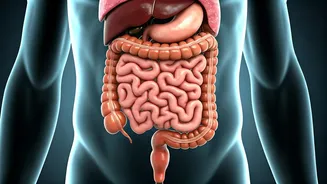Understanding CHD Risks
Coronary heart disease (CHD) is a significant health concern, often stemming from lifestyle choices and underlying health conditions. Multiple factors
contribute to an increased risk of developing CHD, and awareness is the first step toward prevention. Key risk factors include high cholesterol, high blood pressure, smoking, diabetes, obesity, and physical inactivity. These elements can damage the arteries, leading to the buildup of plaque, which obstructs blood flow and elevates the chances of a heart attack or stroke. Addressing these risk factors can significantly improve cardiovascular health.
High Cholesterol’s Impact
High cholesterol is a primary contributor to CHD. It leads to the accumulation of plaque within the arteries, making them narrower. This plaque formation impedes blood flow, increasing the risk of a heart attack or stroke. High levels of LDL (low-density lipoprotein) cholesterol, often referred to as 'bad' cholesterol, are particularly detrimental. Conversely, high levels of HDL (high-density lipoprotein) cholesterol, or 'good' cholesterol, can help remove LDL cholesterol from the arteries. Managing cholesterol involves dietary adjustments, such as reducing saturated and trans fats. Regular exercise and, if needed, medication can also play a vital role in keeping cholesterol levels in check.
Blood Pressure Control
High blood pressure, or hypertension, is another major risk factor for CHD. Elevated blood pressure puts extra strain on the heart and blood vessels, potentially leading to damage over time. This can cause the arteries to become less elastic, further hindering blood flow. Regularly monitoring blood pressure is crucial for early detection and management. Lifestyle modifications are often the first line of defense, including dietary changes like reducing sodium intake and engaging in regular physical activity. If these measures are insufficient, doctors may prescribe medication to help keep blood pressure within a healthy range, thus reducing the risk of CHD.
Smoking's Harmful Effects
Smoking is a significantly detrimental behavior that gravely elevates the risk of CHD. The chemicals in cigarette smoke damage blood vessels, making them more susceptible to plaque buildup. This damage encourages the formation of blood clots, increasing the likelihood of a heart attack or stroke. Smoking also lowers HDL (good) cholesterol levels and elevates blood pressure. Quitting smoking is one of the most effective steps an individual can take to improve heart health. Various methods, such as nicotine replacement therapy, counseling, and support groups, can assist in this process, offering considerable health benefits.
Diabetes and CHD
Diabetes, particularly when poorly managed, significantly increases the risk of CHD. High blood sugar levels can harm the blood vessels and nerves that control the heart. Over time, this damage can lead to plaque formation and other complications. People with diabetes often experience other risk factors, such as high blood pressure and high cholesterol, which further increase their risk. Effective management of diabetes includes monitoring blood sugar levels, following a balanced diet, exercising regularly, and taking medication as prescribed. Controlling blood sugar levels can greatly reduce the risk of developing CHD.
Obesity and Its Link
Obesity is another critical risk factor for CHD. Excess weight can contribute to other risk factors like high cholesterol, high blood pressure, and diabetes. The heart must work harder to circulate blood throughout the body when a person is obese. This increased workload can lead to the heart's weakening and eventually contribute to CHD. Maintaining a healthy weight involves a combination of a balanced diet and regular physical activity. Consulting with healthcare professionals to develop a personalized weight management plan is beneficial for overall heart health.
Importance of Activity
Physical inactivity is a significant contributor to CHD. A sedentary lifestyle can lead to the development of other risk factors, such as high cholesterol, high blood pressure, and obesity. Regular physical activity, such as brisk walking, running, or swimming, strengthens the cardiovascular system, improves blood flow, and helps manage weight. Exercise increases HDL (good) cholesterol levels and lowers LDL (bad) cholesterol levels. Aim for at least 150 minutes of moderate-intensity or 75 minutes of vigorous-intensity aerobic activity per week. Incorporating physical activity into daily routines is a crucial step towards reducing CHD risk.












